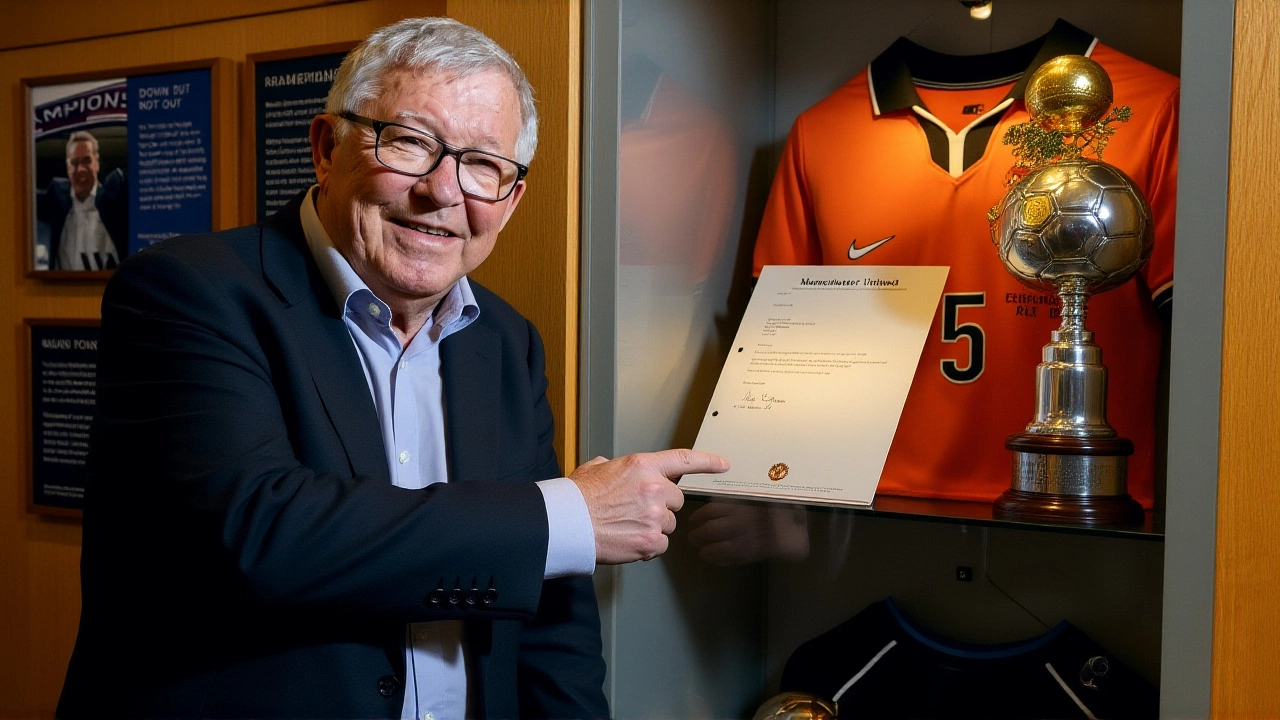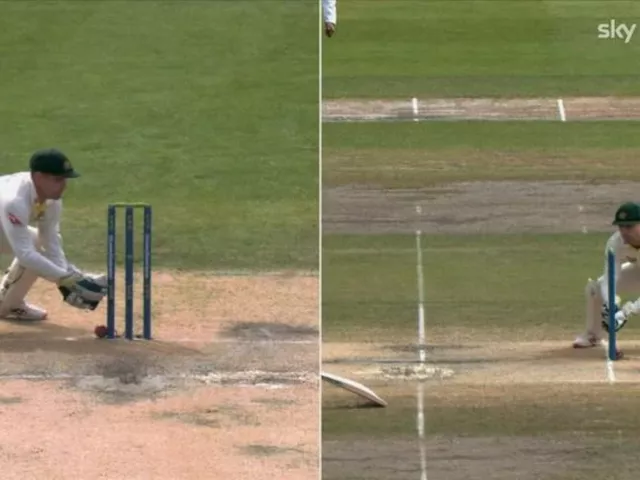On November 21, 2025, at 2:15 PM GMT, Sir Alexander Chapman Ferguson, the legendary former manager of Manchester United Football Club, stood frozen in front of a framed letter in the newly opened 'Rivalry Reflections' exhibit at Ibrox Stadium’s Rangers Football Club Museum. The 26-year-old handwritten note—written by Ferguson himself on Manchester United letterhead—was a quiet bombshell. He hadn’t seen it since 1999. His hands shook. He whispered, "I’d forgotten I wrote that."
The Letter That Time Forgot
The letter, dated November 5, 1999, three days after Manchester United’s 1-1 draw with Rangers in a UEFA Champions League group stage clash, was written on A4 paper in Ferguson’s unmistakable Spencerian script. At 378 words across three pages, it wasn’t a press release or a tactical note—it was personal. "Your commitment to footballing integrity during our November 3 encounter, despite the intense local pressures, reaffirmed my belief that Scotland's game transcends mere club allegiances," he wrote, referencing then-Rangers chairman David William Murray’s hospitality. The letter was donated anonymously to the museum in March 2001, cataloged as RMC-1999-11-05-001, and stored in climate-controlled silence for over two decades.Curator David Speed, a Ph.D. in sports history from the University of Glasgow, confirmed Ferguson’s emotional reaction was immediate. "He stopped mid-tour. Asked us to turn off the lights. Just sat there, reading it again," Speed recalled. The letter’s most haunting line—"Glasgow's heartbeat lives in these terraces"—brought Ferguson to tears. It was a side of him rarely seen: reflective, almost vulnerable.
Why This Matters Beyond Emotion
This wasn’t just nostalgia. The letter reveals a hidden chapter in Ferguson’s managerial philosophy. His 2013 autobiography never mentioned this moment. But here, in ink, was proof that his legendary intensity was tempered by respect—for the city, the fans, the history. Professor Matthew L. McDowell of the University of Glasgow told The Herald: "This shows Ferguson understood the cultural weight of the Old Firm. He didn’t just see rivals—he saw custodians of a tradition he admired. That shaped how he approached European ties against Scottish clubs." Between 1992 and 2007, Ferguson’s Manchester United played Rangers 16 times in European competition. A 7-5-4 record. Over 1.2 million fans packed stadiums. But this letter suggests he saw something deeper than rivalry. A shared reverence for the game’s soul.
From Museum Exhibit to Classroom Curriculum
The discovery didn’t stay in the museum. Within hours, Rangers FC CEO James Bisgrove announced the letter would be digitized and preserved under a 10-year loan agreement with the National Football Museum in Manchester. Meanwhile, Rangers’ Head of Community Engagement, Laura Fraser, confirmed plans to develop educational modules for 60 Glasgow schools, reaching 15,000 students by February 2026.The letter’s value has skyrocketed—from £25,000 in 2001 to £125,000 after Sotheby’s Sports Memorabilia Division revalued it. But Ferguson didn’t seek a penny. Instead, at 3:45 PM that same day, he quietly donated £50,000 to the Rangers Charity Foundation.
A Broader Legacy: Football as Diplomacy
The Scottish Football Association, headquartered at Hampden Park, is now considering integrating such artifacts into its 2024 "Unity Through Football" initiative. The letter, after all, was written during one of the most volatile eras in Scottish football—when sectarian tensions ran high, and club loyalties were often weaponized. Yet here was the most successful manager in English football history, choosing to write about respect, not rivalry.Celtic FC released a measured statement: "We acknowledge the historical significance of cross-club correspondence from that era." No fireworks. No spin. Just quiet recognition. That, perhaps, was the most powerful response of all.

What’s Next? The Exhibition and the Echo
From January 15 to March 30, 2026, the letter will be the centerpiece of Rangers’ "25 Years of Reflection" exhibition. Museum projections estimate 120,000 visitors—30% above 2024 numbers. Tourists, students, former players, even rival fans will stand before it. And they’ll see not a trophy or a jersey, but a man’s honest words—written in a moment of clarity, buried for decades, now resurrected.It’s a reminder: football’s greatest moments aren’t always the goals. Sometimes, they’re the quiet ones. The letters. The handshakes. The tears.
Frequently Asked Questions
Why is this letter so significant to Scottish football history?
The letter is the first known private reflection from Sir Alex Ferguson acknowledging the cultural weight of the Old Firm rivalry beyond competition. It reveals his personal respect for Rangers’ heritage and David Murray’s leadership during a tense era, offering historians new insight into how English managers viewed Scottish football’s unique social fabric—something never documented in his public writings.
How did the letter end up in the Rangers museum if it was written by a Manchester United manager?
The letter was anonymously donated to the museum in March 2001, likely by someone connected to Rangers’ front office who received it from Ferguson after their 1999 Champions League meeting. Its preservation suggests the club recognized its symbolic value early, even if they didn’t know how to use it—until now.
What impact will this have on Rangers’ relationship with Celtic FC?
While Celtic’s statement was neutral, the letter’s emphasis on "footballing integrity" and "transcending allegiances" creates a rare shared narrative. Both clubs have long avoided public gestures of unity. This artifact, now publicly celebrated, may quietly encourage future collaborations—especially in youth education and heritage projects.
Why did Ferguson donate £50,000 to Rangers’ charity after finding the letter?
Ferguson has a long history of supporting community causes, especially in Glasgow, where he was born. The donation wasn’t transactional—it was emotional. He recognized the museum’s effort to preserve football’s human side. The money, recorded at 3:45 PM on November 21, 2025, was his way of honoring the institution that kept his words alive for 26 years.
Will this letter be available to view online?
Yes. Rangers FC has commissioned a high-resolution, 3D-digitized version with annotated commentary from curator David Speed and historian Matthew McDowell. It will be accessible via the museum’s website starting January 1, 2026, alongside lesson plans for schools, ensuring the letter’s message reaches far beyond Glasgow.
What does this mean for future football memorabilia?
This discovery shifts the value of sports artifacts from trophies and kits to personal, handwritten moments. Sotheby’s now lists "emotional correspondence" as a new category. Future collectors may seek letters between rival managers, players, or even fans—because football’s true legacy isn’t always on the scoreboard.



